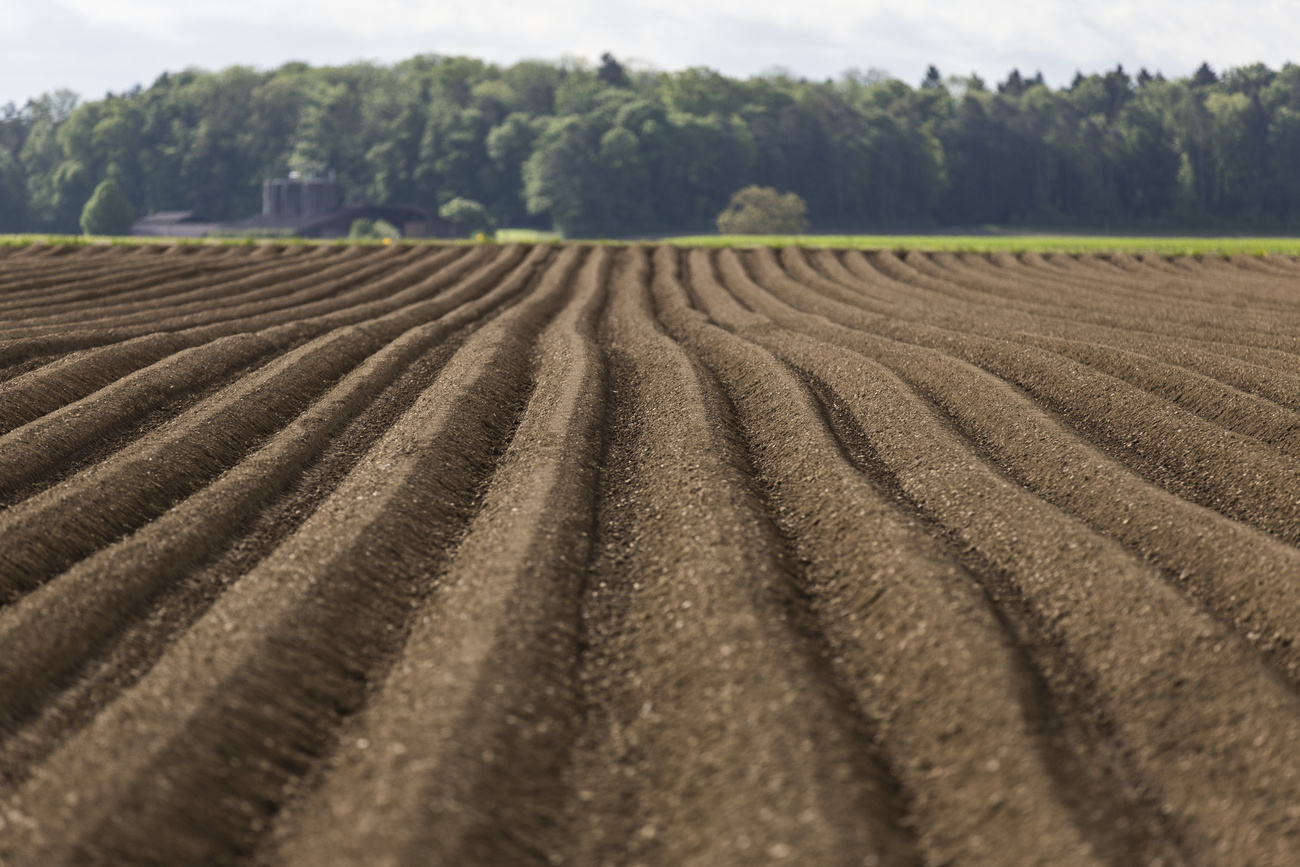
Climate crisis accelerates CO2 emissions from soil microbes

A Swiss study shows that emissions of carbon dioxide by soil microbes into the Earth's atmosphere will accelerate by the end of the century, potentially surging by up to 40% – most significantly in the polar regions.
When bacteria, fungi, and other microorganisms decompose organic material in the soil, they actively release CO2 into the atmosphere. This process is called heterotrophic respiration. Around one-fifth of the atmospheric CO2 is thought to originate from soil sources.
According to a study published in Nature CommunicationsExternal link, by 2100, CO2 emissions from soil microbes will escalate, potentially rising by up to 40% globally compared to the current levels, under the worst-case climate scenario.
+ Switzerland in 2050: portrait of a climate-neutral country
“Thus, the projected rise in microbial CO2 emissions will further contribute to the aggravation of global warming, emphasising the urgent need to get more accurate estimates of the heterotrophic respiration rates,” Alon Nissan, the main author of the study and an ETH Postdoctoral Fellow at the ETH Zurich Institute of Environmental Engineering, said in a statementExternal link on Thursday.
The increase in microbial CO2 emissions varies across climate zones, the model shows. In cold polar regions, the main contributor to the increase is the decline in soil moisture rather than a significant rise in temperature, unlike in hot and temperate zones.
+ Swiss approve net-zero climate law
Under their worst-case climate scenario, microbial CO2 emissions in polar regions are projected to rise by 10% per decade by 2100, twice the rate anticipated for the rest of the world. The researchers say this is due to optimal conditions for heterotrophic respiration, which occur when soils are in a semi-saturated state, i.e., neither too dry nor too wet. These conditions prevail during soil thawing in polar regions.
As of 2021, most CO2 emissions from soil microbes are primarily originating from the warm regions of the Earth. Specifically, 67% of these emissions come from the tropics, 23% from the subtropics, 10% from the temperate zones, and just 0.1% from the Arctic or polar regions.
+ Switzerland’s ‘disappointing’ contribution to an emissions-free planet
The researchers predict substantial growth in microbial CO2 emissions across all these regions. By 2100, their projections point to an increase of 119% in the polar regions, 38% in the tropics, 40% in the subtropics, and 48% in the temperate zones.
Gaining a clearer overview of microbial CO2 emissions will be essential for comprehending whether soils will store or release CO2 in the future, the researchers conclude.
“Due to climate change, the magnitude of these carbon fluxes—both the inflow through photosynthesis and the outflow through respiration—remains uncertain. However, this magnitude will impact the current role of soils as carbon sinks,” explains Nissan.
The study was conducted by researchers from the federal technology institute ETH Zurich, the Swiss Federal Institute for Forest, Snow and Landscape Research (WSL), the Swiss Federal Institute of Aquatic Science and Technology (Eawag), and the University of Lausanne.

In compliance with the JTI standards
More: SWI swissinfo.ch certified by the Journalism Trust Initiative















![The four-metre-long painting "Sonntag der Bergbauern" [Sunday of the Mountain Farmers, 1923-24/26] had to be removed by a crane from the German Chancellery in Berlin for the exhibition in Bern.](https://www.swissinfo.ch/content/wp-content/uploads/sites/13/2025/12/01_Pressebild_KirchnerxKirchner.jpg?ver=6cb1bc31)














You can find an overview of ongoing debates with our journalists here . Please join us!
If you want to start a conversation about a topic raised in this article or want to report factual errors, email us at english@swissinfo.ch.